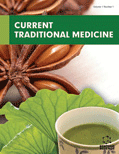Abstract
Hoslundia opposita is an aromatic plant of the family Lamiaceae and the only member of the Hoslundia genus. It is used traditionally for treating HIV/AIDs related diseases, Breast cancer, gonorrhea, syphilis, appendicitis, epilepsy and convulsion, malaria, etc. A review of relevant literature on biology, folkloric uses, phytochemistry and pharmacology were done. The electronic databases searched included Google Scholar, PubMed, Science Direct, Wiley and Springer. Sixteen bioactive compounds have been isolated from the plants, namely; 3-O-benzoylhosloppone, 3-Ocinnamoylhosloppone, 3-O-benzoylhinokiol, 3-O-benzoylhosloquine, Euscaphic acid, 5,7- dimethoxy6-methylflavone, Hoslunddiol, Oppositin, 5-O-methylhoslundin, Tectochrysin, Hoslundin, Hoslunfuranine, 5-O-methylhoslunfuranine, Hosloppin, Hoslundal and Ursolic acid. The plant, with its phytochemicals, has shown various pharmacological effects such as antimalarial, antidiabetes, antioxidant, anti-inflammatory, anticancer and immunomodulatory effects. This review presented scientific findings on the therapeutic potential of Hoslundia opposita against several infectious and non-infectious diseases. There is a need for further investigation of the mechanism underlying the therapeutic potential of this plant against various diseases. There is also a need for clinical trials which will validate its efficacy and safety.
Keywords: Hoslundia opposita, traditional uses, pharmacological effects, phytochemistry, triterpenoids, neuroprotective effect.
[http://dx.doi.org/10.1002/ffj.1402]
[http://dx.doi.org/10.1016/j.sajb.2006.07.001]
[http://dx.doi.org/10.1016/j.sajb.2018.11.003]
[http://dx.doi.org/10.1186/1746-4269-11-7] [PMID: 25971428]
[http://dx.doi.org/10.1016/j.eujim.2020.101062]
[http://dx.doi.org/10.1016/j.jep.2009.07.024] [PMID: 19635544]
[http://dx.doi.org/10.1089/jmf.2013.0118] [PMID: 25137031]
[http://dx.doi.org/10.1016/j.jep.2004.11.015] [PMID: 15707773]
[http://dx.doi.org/10.1186/s12906-017-2005-8] [PMID: 29166892]
[http://dx.doi.org/10.1016/j.jep.2004.01.021] [PMID: 15234751]
[http://dx.doi.org/10.1016/j.jep.2009.09.035] [PMID: 19799983]
[http://dx.doi.org/10.1002/(SICI)1099-1573(199908/09)13:5<425::AID-PTR466>3.0.CO;2-1] [PMID: 10441785]
[http://dx.doi.org/10.1002/(SICI)1099-1573(199808)12:5<364::AID-PTR292>3.0.CO;2-N]
[http://dx.doi.org/10.1016/j.jep.2005.10.027] [PMID: 16368205]
[http://dx.doi.org/10.1016/j.jep.2010.11.013] [PMID: 21075191]
[http://dx.doi.org/10.5455/spatula.20160418065130]
[http://dx.doi.org/10.3923/biotech.2007.97.100]
[http://dx.doi.org/10.1080/14786419.2013.866115] [PMID: 24422945]
[http://dx.doi.org/10.1007/s11356-017-9589-x] [PMID: 28685336]
[http://dx.doi.org/10.15414/afz.2017.20.03.54-59]
[http://dx.doi.org/10.1021/bk-2009-1021.ch014]
[http://dx.doi.org/10.1016/S0308-8146(03)00088-8]
[http://dx.doi.org/10.1021/np50115a014]
[http://dx.doi.org/10.1055/s-0032-1315256] [PMID: 22948611]
[http://dx.doi.org/10.1080/14786410802250037] [PMID: 18780245]
[http://dx.doi.org/10.1055/s-2006-960984] [PMID: 2236289]
[PMID: 27231470]
[http://dx.doi.org/10.3923/ijp.2010.863.871]
[http://dx.doi.org/10.1201/b16292]
[http://dx.doi.org/10.1016/j.jep.2011.05.002] [PMID: 21575702]
[http://dx.doi.org/10.1155/2016/4238625] [PMID: 27069489]
[http://dx.doi.org/10.1016/j.jep.2010.12.043] [PMID: 21211554]
[http://dx.doi.org/10.1016/j.jep.2007.07.014] [PMID: 17720338]
[http://dx.doi.org/10.1016/j.sajb.2019.06.003]
[http://dx.doi.org/10.1016/j.jep.2019.112205] [PMID: 31476442]
[http://dx.doi.org/10.4314/ajtcam.v9i1.12] [PMID: 23983324]
[http://dx.doi.org/10.1016/j.jep.2007.11.005] [PMID: 18096337]
[http://dx.doi.org/10.32859/era.18.20.1-17]
[http://dx.doi.org/10.1155/2020/1543831] [PMID: 32256635]
[http://dx.doi.org/10.1186/1746-4269-10-9] [PMID: 24467812]
[http://dx.doi.org/10.1186/s13002-015-0077-4] [PMID: 26762159]
[http://dx.doi.org/10.1016/j.jspr.2008.10.002]
[http://dx.doi.org/10.1016/j.jep.2010.09.028] [PMID: 20932887]
[http://dx.doi.org/10.1155/2018/4630371] [PMID: 29743923]
[http://dx.doi.org/10.1186/s13002-015-0004-8] [PMID: 25888765]
[http://dx.doi.org/10.1186/1746-4269-7-7] [PMID: 21241484]
[http://dx.doi.org/10.17348/era.14.0.505-516]
[http://dx.doi.org/10.1016/j.jep.2012.09.028] [PMID: 23022690]
[http://dx.doi.org/10.3390/medicines6010001] [PMID: 30577439]
[http://dx.doi.org/10.4314/ajtcam.v4i1.31193] [PMID: 20162075]
[http://dx.doi.org/10.1128/AAC.46.6.1914-1920.2002] [PMID: 12019108]
[http://dx.doi.org/10.1371/journal.pone.0041737] [PMID: 23209545]
[http://dx.doi.org/10.5897/JMPR2014.5501]
[http://dx.doi.org/10.1016/j.jep.2019.111926] [PMID: 31067488]
[http://dx.doi.org/10.4314/ajtcam.v12i1.2]
[http://dx.doi.org/10.9734/JAMB/2018/41897]
[http://dx.doi.org/10.1111/j.1365-2621.2006.01258.x]
[http://dx.doi.org/10.9734/ajrb/2021/v8i430187]
[http://dx.doi.org/10.1016/S0031-9422(00)95112-4]
[http://dx.doi.org/10.1002/(SICI)1099-1026(199909/10)14:5<319::AID-FFJ836>3.0.CO;2-O]
[http://dx.doi.org/10.1002/ffj.1715]
[http://dx.doi.org/10.1016/S0040-4020(01)80869-3]
[http://dx.doi.org/10.1016/S0031-9422(00)97526-5]
[http://dx.doi.org/10.4103/0974-8490.85004] [PMID: 22022167]
[http://dx.doi.org/10.1691/ph.2008.8583] [PMID: 18972842]
[http://dx.doi.org/10.1002/jcb.24062] [PMID: 22234926]
[http://dx.doi.org/10.4236/cmb.2016.62002]
[http://dx.doi.org/10.3748/wjg.v8.i3.493] [PMID: 12046077]
[http://dx.doi.org/10.1016/S0378-8741(00)00396-2] [PMID: 11297842]
[http://dx.doi.org/10.1177/1534735410367647] [PMID: 20462855]
[http://dx.doi.org/10.1078/094471103322331421] [PMID: 13678231]
[http://dx.doi.org/10.1007/BF02976660] [PMID: 12643591]
[http://dx.doi.org/10.1016/j.brainres.2012.12.032] [PMID: 23276496]
[http://dx.doi.org/10.1016/j.bbagen.2014.10.001] [PMID: 25312987]
[http://dx.doi.org/10.1016/j.intimp.2008.10.013] [PMID: 19013541]
[http://dx.doi.org/10.1002/0471238961.0114011214210705.a01]
[http://dx.doi.org/10.1002/mnfr.201700288] [PMID: 28980448]
[http://dx.doi.org/10.1371/journal.pone.0031318] [PMID: 22363615]
[http://dx.doi.org/10.1007/978-1-4684-5907-4_30]
[http://dx.doi.org/10.2174/157015908783769653] [PMID: 19305785]
[http://dx.doi.org/10.3389/fneur.2018.00253] [PMID: 29867706]
[http://dx.doi.org/10.1007/s12640-019-00038-6] [PMID: 31016688]
[http://dx.doi.org/10.1007/s11064-019-02906-1] [PMID: 31713091]
[http://dx.doi.org/10.1016/j.biopha.2017.08.098] [PMID: 28881291]
[http://dx.doi.org/10.1186/1472-6882-13-79] [PMID: 23565862]
[http://dx.doi.org/10.3892/ol.2019.10171] [PMID: 31186681]
[http://dx.doi.org/10.12659/MSM.913069] [PMID: 30772887]
[http://dx.doi.org/10.1002/ijc.28301] [PMID: 23737395]
[http://dx.doi.org/10.1016/j.canlet.2014.07.007] [PMID: 25083589]
[http://dx.doi.org/10.1186/s12943-015-0377-2]
[http://dx.doi.org/10.4103/0973-8258.62159]
[http://dx.doi.org/10.1016/j.lfs.2005.05.060] [PMID: 16137716]
[http://dx.doi.org/10.1002/ptr.2650060205]
[http://dx.doi.org/10.1007/BF03179930] [PMID: 12568357]
[http://dx.doi.org/10.4314/just.v28i2.33091]
[http://dx.doi.org/10.1016/j.cbi.2008.08.010] [PMID: 18793624]
[http://dx.doi.org/10.1101/2021.07.25.453693]
[http://dx.doi.org/10.1016/j.eujim.2019.101011]
[http://dx.doi.org/10.1002/ptr.970] [PMID: 12203276]
[http://dx.doi.org/10.1155/2015/230832] [PMID: 26170872]
[http://dx.doi.org/10.4038/sljb.v6i1.50]
[PMID: 1477878]
[http://dx.doi.org/10.1128/mr.59.2.201-222.1995] [PMID: 7603409]
[http://dx.doi.org/10.1007/s00436-008-1137-7] [PMID: 18690475]
[http://dx.doi.org/10.1007/s00436-007-0815-1] [PMID: 18066599]
[http://dx.doi.org/10.1080/13880200590903408]
[http://dx.doi.org/10.1016/S0022-474X(96)00048-3]
[http://dx.doi.org/10.1002/cbdv.201600418] [PMID: 28092425]
[http://dx.doi.org/10.1186/s12985-018-1022-7] [PMID: 30021589]
[http://dx.doi.org/10.19026/bjpt.5.5444]
[http://dx.doi.org/10.22087/herb%20med%20j.v4i4.778]






























